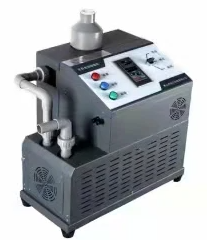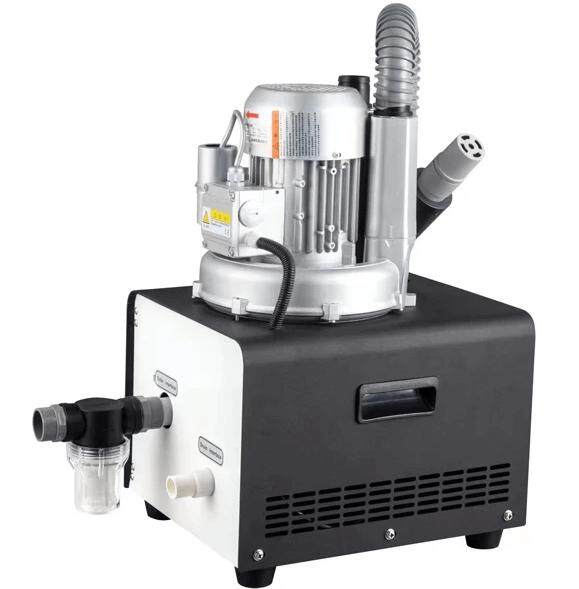Dental suction machines are essential pieces of equipment in dental offices, allowing dentists and dental hygienists to provide high-quality care for their patients. These machines work by removing saliva, blood, and other debris from the patient's mouth during dental procedures, ensuring that the patient remains comfortable and the dental team can work efficiently.
In this article, we will explore the purpose of dental suction, the flow rate of dental suction, the differences between wet and dry dental suction machines, and some frequently asked questions about these machines.
The purpose of dental suction is to remove excess saliva, blood, water, and other debris from the patient's mouth during dental procedures. Dental suction helps to keep the mouth dry and clear of fluids, which is important for the dentist to have a clear view of the teeth and gums while working.
It also helps to prevent the patient from swallowing or aspirating any debris, which could cause harm. The dental suction device consists of a tube and a suction motor that creates a vacuum to remove fluids from the mouth. Dental suction is used in almost all dental procedures, including cleaning, fillings, extractions, and more.

The flow rate of dental suction can vary depending on the type of suction device being used. In general, the flow rate of dental suction ranges from 15 to 25 liters per minute (LPM) for high-volume evacuators (HVEs), and from 0.5 to 5 LPM for saliva ejectors.
HVEs are used for heavy-duty suction during procedures such as extractions and can remove a large volume of fluid quickly. Saliva ejectors, on the other hand, are used for light suction during procedures such as cleanings and can remove small amounts of fluid more gently.
Dentists need to choose the appropriate suction device and adjust the flow rate according to the specific procedure and patient's needs, to ensure optimal suction and patient comfort.
The main difference between wet and dry dental suction is the type of material that they can handle.
●Wet suction is designed to remove fluids such as saliva, blood, and water from the patient's mouth during dental procedures. It is called "wet" because it handles liquid materials. Wet suction typically uses a high-volume evacuator (HVE) and has a high flow rate to quickly remove large volumes of fluid from the patient's mouth.
●On the other hand, dry suction is designed to remove debris such as tooth fragments, dust, and other solid materials from the patient's mouth. It is called "dry" because it handles solid materials. Dry suction typically uses a low-volume evacuator (LVE) and has a lower flow rate to remove smaller amounts of debris.
While both wet and dry suction is used during dental procedures, they serve different purposes and are often used together to ensure a clean and dry working environment for the dentist.

Pneumatic Suction in Dental Chair
Dental suction traps should be changed regularly to ensure that they are functioning properly and to prevent clogs and backups in the suction system. The frequency of trap changes depends on the volume and type of procedures performed in the dental practice.
In general, it is recommended to change the dental suction traps at least once a month or more frequently if there is heavy use of the suction system. However, if the traps become visibly dirty or clogged, they should be changed immediately to prevent suction system failure.
It is also important to follow the manufacturer's instructions for cleaning and changing suction traps, as well as to use proper personal protective equipment when handling potentially infectious materials. Regular maintenance and cleaning of the dental suction system can help to extend the life of the traps and prevent costly repairs.
Dental suction lines should be cleaned regularly to prevent clogs, reduce the risk of infection, and maintain optimal suction performance. The frequency of cleaning depends on the type of procedures performed and the volume of patients seen in the dental practice.
In general, it is recommended to clean dental suction lines daily, especially if the practice performs high-volume procedures such as extractions or surgeries. For practices with lower volume, weekly cleaning may be sufficient.
The cleaning process typically involves flushing the lines with a cleaning solution that is specifically designed for dental suction lines. The solution is circulated through the lines using a special cleaning device, which helps to dislodge and remove any debris or buildup that may be present.
Dental suction machines are an essential tool in any dental office, allowing the dental team to work efficiently and ensuring that patients remain comfortable during procedures. When selecting a dental suction machine, it is important to consider the flow rate and whether a wet or dry suction machine is best suited for your practice.
By understanding the purpose of dental suction and the differences between wet and dry suction machines, you can choose the right machine for your needs and provide the best possible care for your patients.